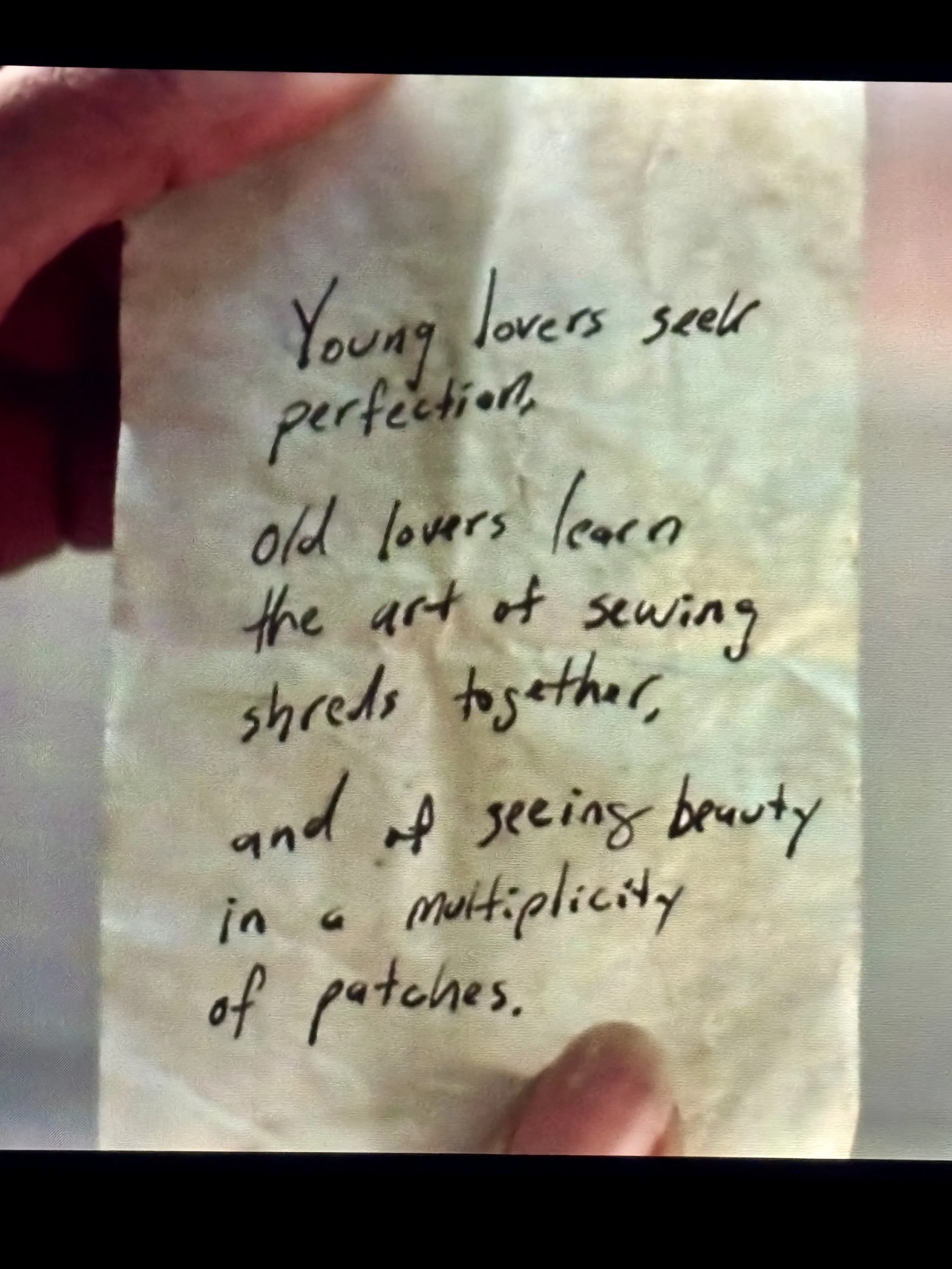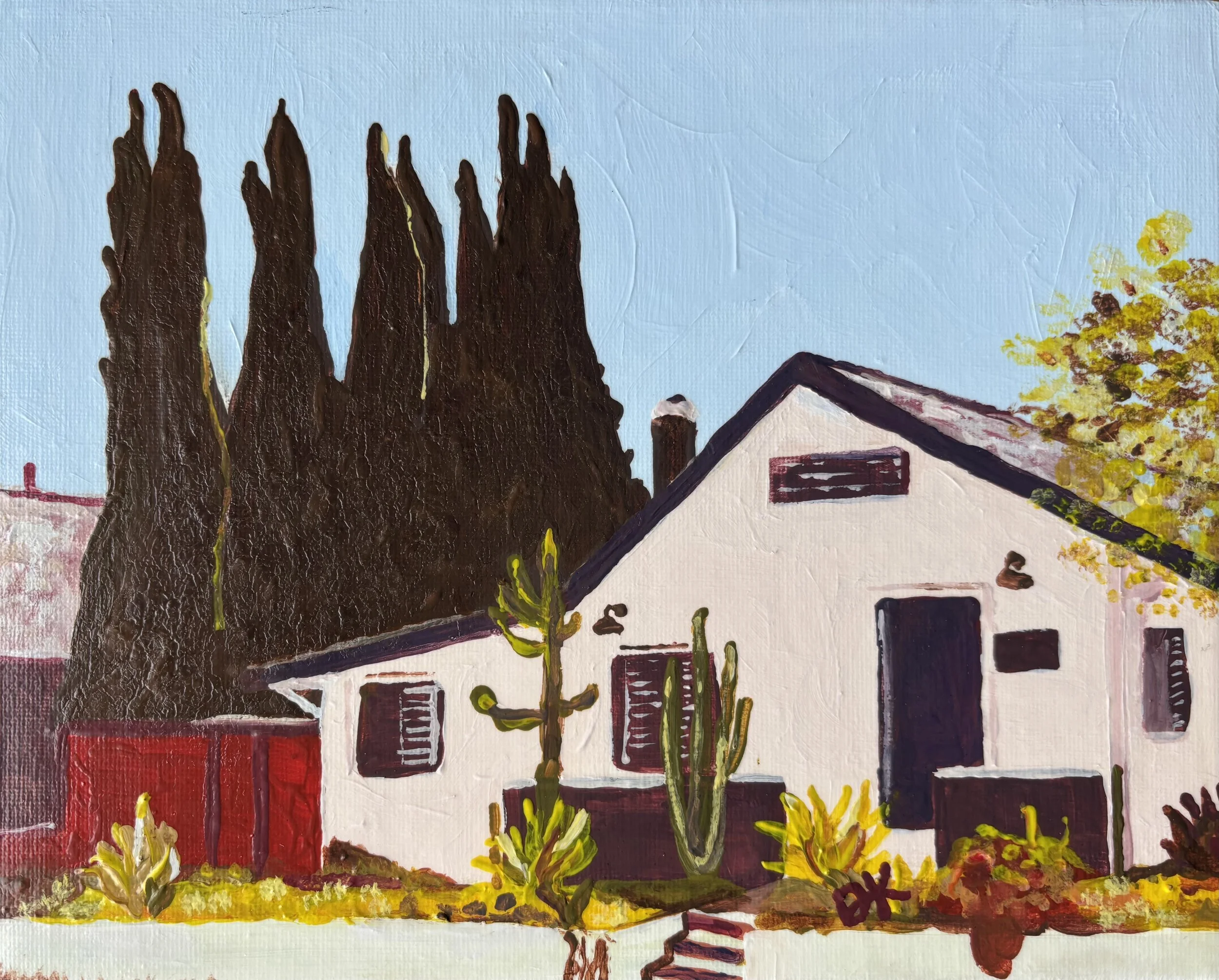In my six or so years residing in Southern California—a place habitually blanched in sunlight—there have been a few chapters when it seemed the weather obliged my mood, my psychological state, and the very particular thing I was navigating at the time. Two of these chapters involved not the typical, reigning sun but the provisional, visiting rain. Day after day of uncommon rain. Gray, muted-blue skies and rain. A weather event to say, “Time to change it up.”
The first such chapter, a few years ago, I dug deep into the archives of an old email account and reread thousands of emails exchanged between myself and a former lover who lived at a distance for most of our relationship. He lived—and for a time I lived with him—in a notedly damp European city nestled near the sea. A decade removed from that love affair, I sat at my computer in my apartment in California, and the rain beat steadily on the roof and outside my windows, offering a cocoon for me to process that earlier, rainier era of my life. The weather and the words transported me to a former place and time. Days passed. Days of reading, integrating, and deleting most of those emails. It’s as if the rain was there to say, “Go on, rinse the sediment from your bones. Keep what’s dear and release the rest.” And when the project was complete, the rain cleared.
“It’s gonna rain soon
And pull me back in
Whatever it takes
To fill the shape I’m in”
The second chapter—beginning two weeks ago—, not only did the weather oblige but also the soundtrack. Spotify recommended Searows’ latest release, the song “Dearly Missed,” from his upcoming album Death in the Whaling Business. Was it that the algorithm knew a combination of things at once: that Searows’ PNW-influenced sound would hit just right as a storm reached the coast; that I needed to batten down the hatches of my own psyche to weather the eye of yet another intense life transition; that I needed sound and scene to support me in that, a sort of universal mise en place?
Whether algorithmic phenomena or a blessed coincidence, things align sometimes. Things align beautifully.
I melted quickly into the sound of “Dearly Missed” and thought, This is perfect. Searows is perfect for this weekend. I need to go deeper into the discography. Enter his debut album from 2022, Guard Dog, an album I had never taken time to hear before. In one sentence, this album is described as a rain-soaked, intimate confession; quiet folk woven with raw longing, memory, and the ache of someone trying to tell the truth gently.
Thus, Guard Dog became the soundtrack to my rainy little SoCal life this past couple weeks.
Guard Dog album cover
Searows
And what can I say? Much about the rain, much about my life, much about how beautiful is this music. If the phrase is “You had to be there,” then now it’s “You’d have to hear it.”
“It’s part of me
Wouldn’t you believe it’s nothing?
It’s all you need
When you keep the rain from coming”
A rainy week to myself with admittedly melancholy music was the balm I needed. I was physically ill, as well, with laryngitis rendering me speechless: another prompt from the universe to go silent, reflect, listen deeply. I listened not for words but for feeling. I attuned to the gorgeous frequencies of Searows’ voice, but I didn’t strain for the lyrics those first several listens. The sound seeped in, its own wordless meaning.
City life has a way of occluding the vital undercurrents of my being, particularly in times of transition and mere survival. The freeway roars, merges, passes over and under, intersects, speeds toward a million arrivals, and it all makes sense, but it overwhelms. Windows stack atop and beside each other, portals to the private lives of a hundred residents in a single square block. Crows perch on the power lines. Builders drill and build. Children fuss and parents stop for coffee. The stores blink their lights. I struggle to grab ahold of myself.
I’ve always been someone with a wide aperture. Developing the instinct for narrowing the focus has taken time, experience, maturation. The city is beautifully stimulating but I’m learning to honor my mind’s unique filter. In such a sunny city, too, where the light reveals generously, a rainy, overcast week is a gift to the burdened psyche. The rain lets the mind, heart, and soul be their own light and guide. It says, “Everything is dimmed. Go inside. Feel around. Without much sensory stimuli, come back to your senses.”
With or without the aid of weather, music is a trusty companion and co-regulator in times of need. I’m thankful for Searows’ stunning music helping me to sink into myself and soothe my system this past couple weeks.
As I write this, the sun has returned and the city is abuzz with the holiday season. Change is the only constant, they say, but maybe there is a spirit that stays constant beneath the change. Rainy skies and real music remind us of this spirit.
“But when it’s said and done
I’ll be the north star that takes you home”







